This watch came with no box or instructions. The website I bought it from lists a only a scant few specifications; a sea gull 2542 movement, a 1.4cm thick, 4.3cm 316L (low carbon) brushed stainless steel case, a polished bezel, and a mineral glass crystal. It's explained that the top sub dial shows the mainspring power reserve, the bottom has a sub seconds dial.
As it happens, there's far more technical information to be gleaned from blogs and forums like WatchuSeek and PoorMansWatch Forum than most retailers offer. I especially recommend the article at style.oversubstance.net for this, along with the review and disassembly of a very similar model at watchguy.co.uk. In user terms, I found that the case feels strong, and the movement keeps good time. I was pleased to see that the case back has a decent rubber gasket to keep moisture out; my overall impression was that the Parnis ought to last as well as any other wristwatch.
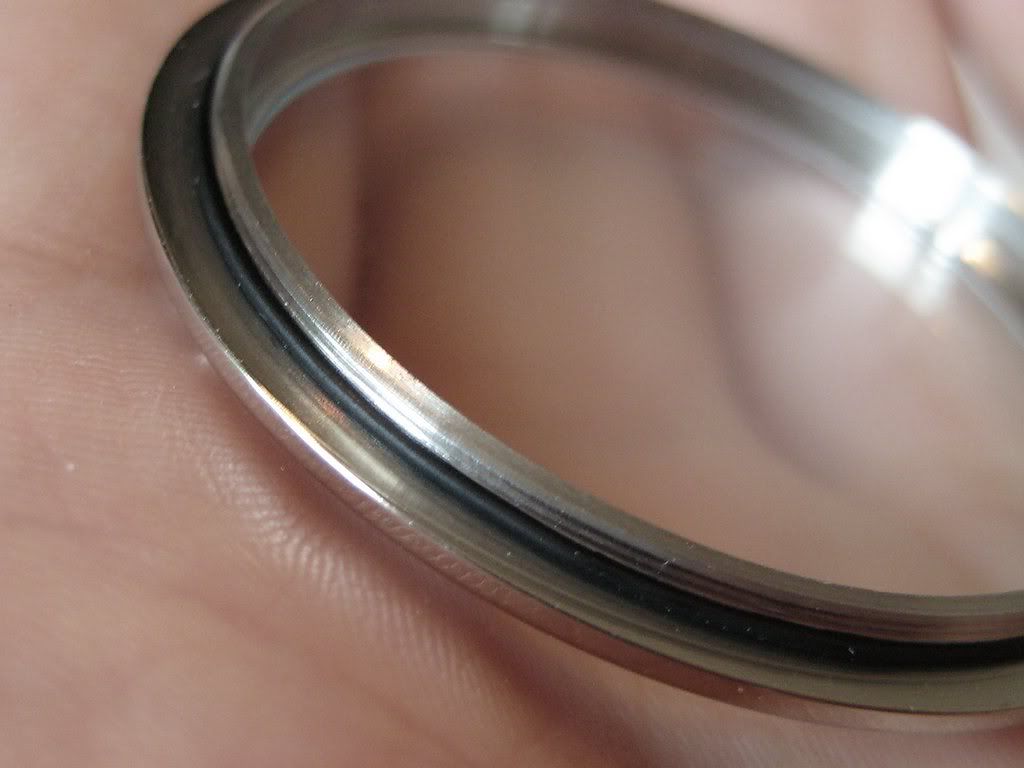 |
| The case back gasket. |
I have read conflicting information as to whether this movement self winds in both directions, or free wheels in one and winds in the other. In any case, it self winds at a rate of about 9.5 indicated hours for every hour worn, so reaches full charge very quickly. It also hand winds without too many turns of the crown - I'll include a short clip in the next post, which focuses on the Parnis' power reserve feature.
Looks
Hands up! I readily admit that the Parnis' strong visual appeal was the main attraction in my purchase decision. It really is a beauty; I'm hard pressed to think of any watch at this price range with such style. The bunkum is kept to a minimum - there's no "Swiss made" claims here.
 |
| In most light, the hands and numerals exude a deep lustrous shine. |
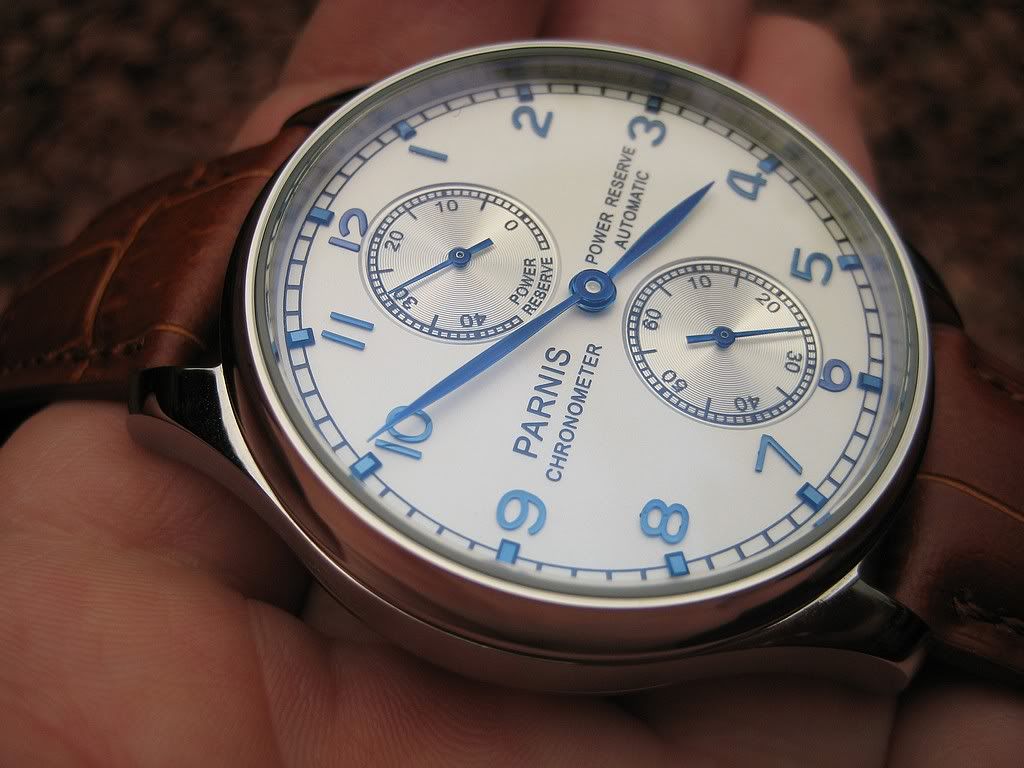 |
| It's hard to believe the Parnis sells for 47GBP including delivery. |
Before I start babbling some ill considered falderal about flow, I'll shut off the verbosity spigot and make with the photos.
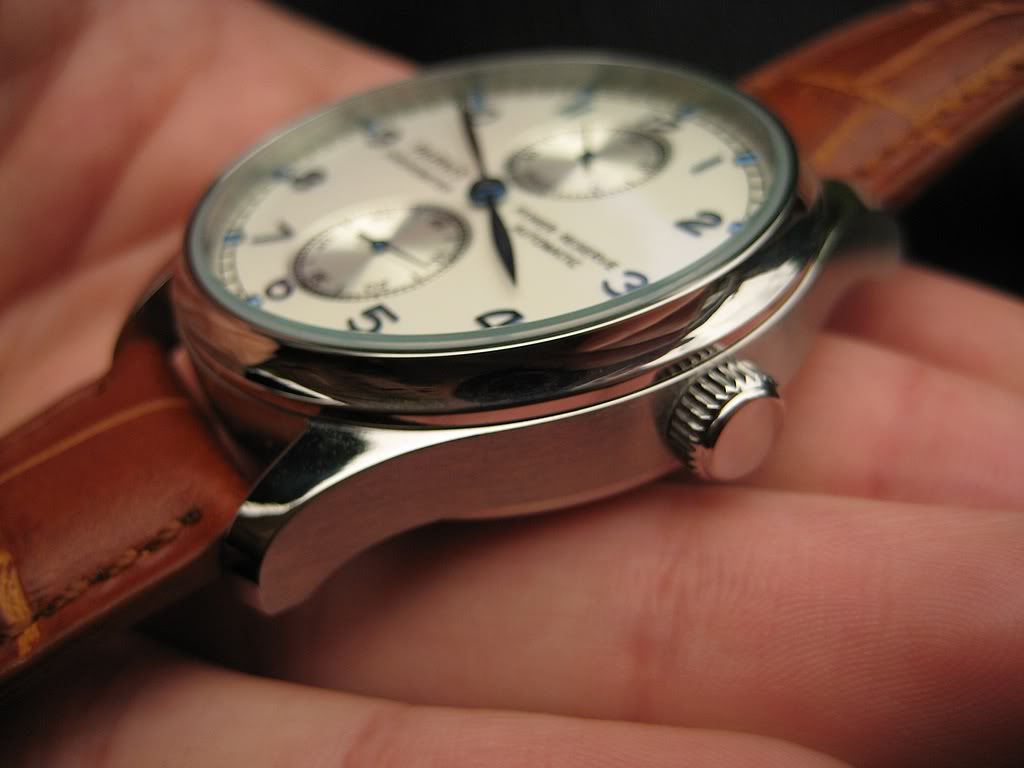 |
| The Parnis' brushed steel case with polished dial and crown. |
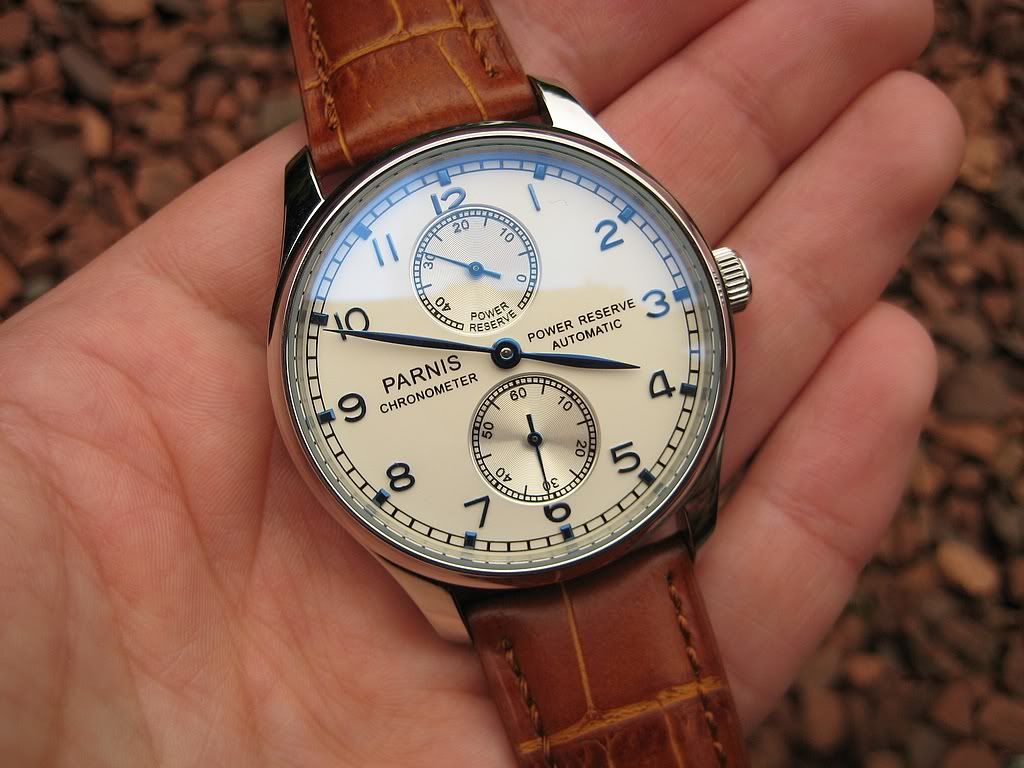 |
| When the time looks this good, it hardly matters if your train is late. |
Back of house, the Parnis doesn't disappoint. The exhibition back has almost as much glass as the front, and it's not wasted on the Seagull derived movement.
 |
| The Parnis' large screw off exhibition case. |
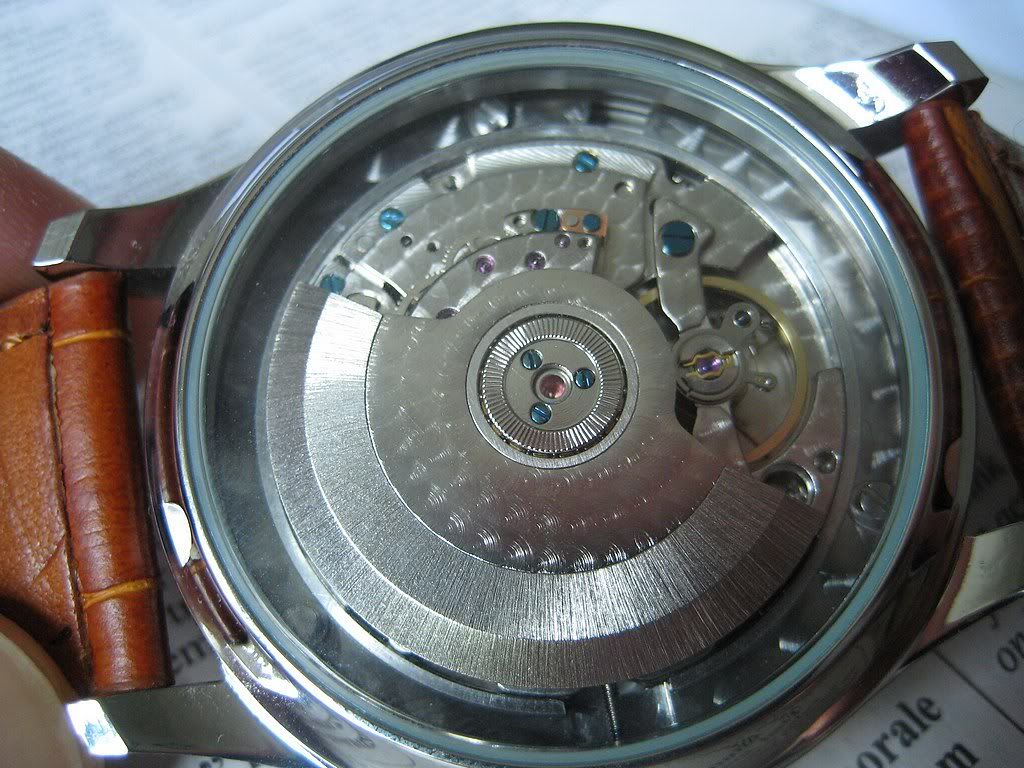 |
| The juxtaposition of opposites continues in the coarsely brushed and finely scalloped rotor. |
Unfortunately to look as good as a watch five times the price (or more), some economies are in evidence. On the bright side, some are far less evident than others - it takes more of a watch enthusiast than I to spot the use of mineral rather than sapphire glass without a little previous background reading. The same goes for the painted, rather than heat treated, screws used in the movement's construction.
The above are economies by design, and are well chosen as slight sacrifices in quality most wouldn't give a hoot about. More vexatious are the Parnis' economies of manufacture - stringent quality control at this price seems to be too far a stretch to still make a profit, and a google search does throw up the odd duffer.
To use my own experience as an example, the first watch I was sent had a prominent (to my eyes) printing flaw that I felt brought down the whole watch. I don't expect the impossible - for example, I wouldn't have minded a movement that needed regulating. Dial restoration is well beyond my abilities however, and the watch went back across Eurasia for a replacement.
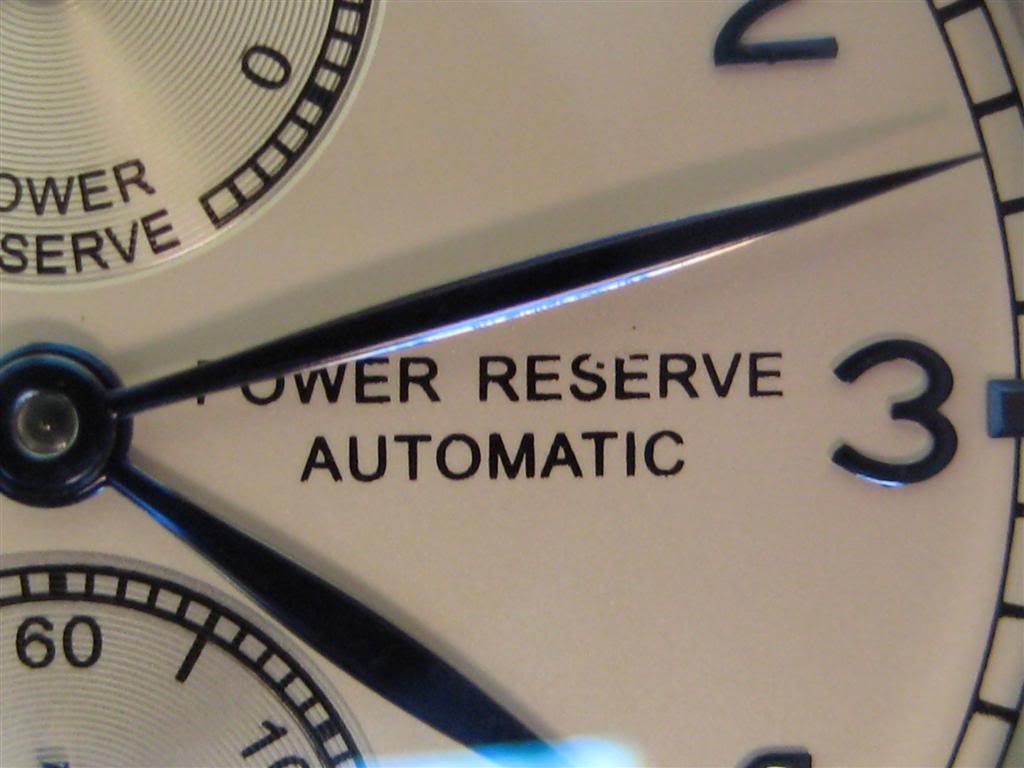 |
| Poor dial printing on my first Parnis. |
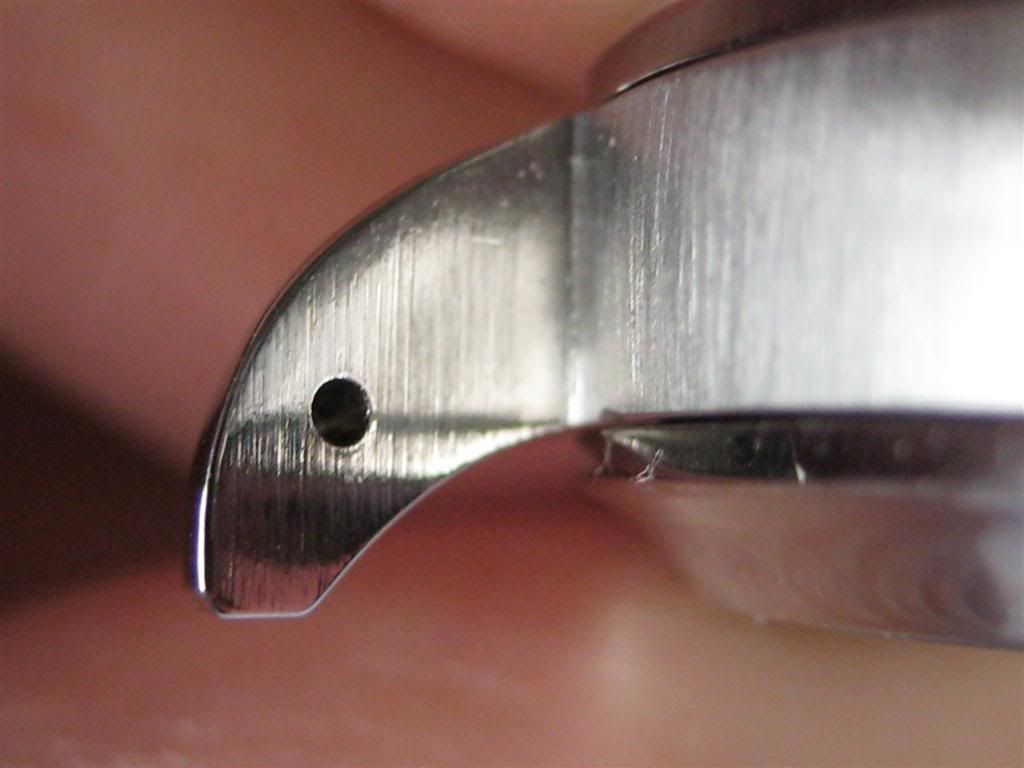 |
| A well made lug hole... |
 |
| ...and a poorly made lug hole. |
As a consequence of this poor workmanship, I upgraded the spring bars. The Parnis is hardly diminutive, so it was important to have spring bars that held the case to the strap securely. I'll save the spring bar swap for a later post, but the Parnis' size does bear some consideration before purchase - let's round off the main review with a thought or two on this subject.
Size
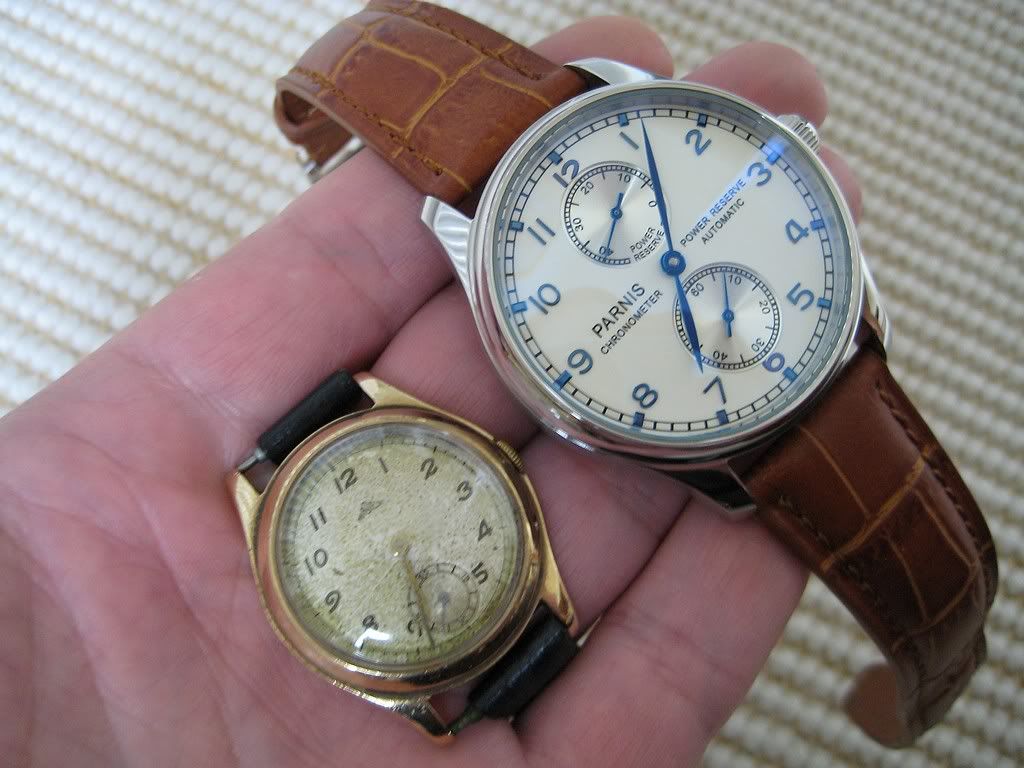 |
| From left to right, a 1950's Majex and a 2012 Parnis. |
Men's wristwatches are on a steady trend, they just seem to grow with every year! Here's a comparison with my grandfather's vintage Majex (about 30mm in size, & badly needing a new 16mm strap).
If you are reading this review with a similar ambivalence over the Parnis' size, I took the following photos in the hope that they provide some sense of proportion "on the wrist" - I tend to wear watches before the joint, for free articulation. Be forewarned that these aren't the best photographs I've ever taken, there were real difficulties focusing on the watch face.
 |
| A 7 inch wrist, sporting an exotic Glasgow tan. |
My personal rule is that a watch shouldn't be so large that the strap lugs overhang past my wrist. The Parnis manages this with a few millimetres to spare, and at 14mm thick, doesn't force the cuff of a shirt or pullover sleeve to ride up - it safely avoids the "look at me with my big watch, aren't I the big shot" look.
 |
| Sleeves haven't had any trouble fitting over the Parnis. |
 | ||
| The Parnis in hand. |
 |
| That face is a big hit with me. |
The very free spinning rotor accounts for some of the case's thickness, and most likely contributes to the Parnis' overall heft; this is not a lightweight timepiece.
On the wrist, I found I got used to the Parnis pretty quickly, though. It isn't substantial enough to irritate, and on balance I came to appreciate the convenience of the auto winder far more than I did begrudge the additional thickness and weight.
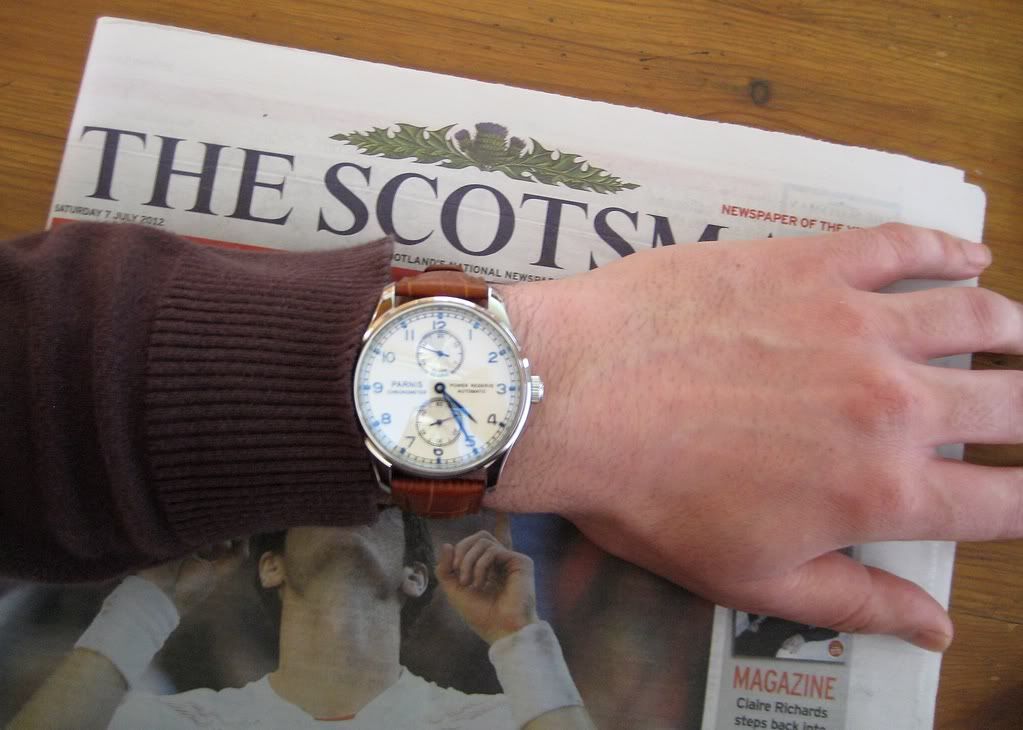 | |||||
| A 43mm case on a 7 inch wrist. |
The wide strap makes for comfortable wear, and the glass case back is warm on the skin in colder weather - a decided bonus in these climes, believe me (this is especially important to me, I can never wear steel bracelets. They seem to act like huge heatsinks, & get my wrist so cold the joint aches!).
All told, there were no problems over the fortnight. The Parnis never felt a nuisance on the wrist, and I came to look forward to wearing the watch in the morning. I'm sure that I'll continue to do so. Although it ran a little fast - 8 seconds a day, crown up overnight - the gain was encouragingly consistent day to day, and over the power reserve range. In other words, all the movement should need is a little regulating to run even more accurately.
Next up - a closer look at the Parnis' power reserve dial feature, with some capacity and accuracy surprises...
No comments:
Post a Comment
Comments seem to be working okay again. You can try leaving one, it might work! If not, you can reach me on twitter if you like @Flounder_FPN